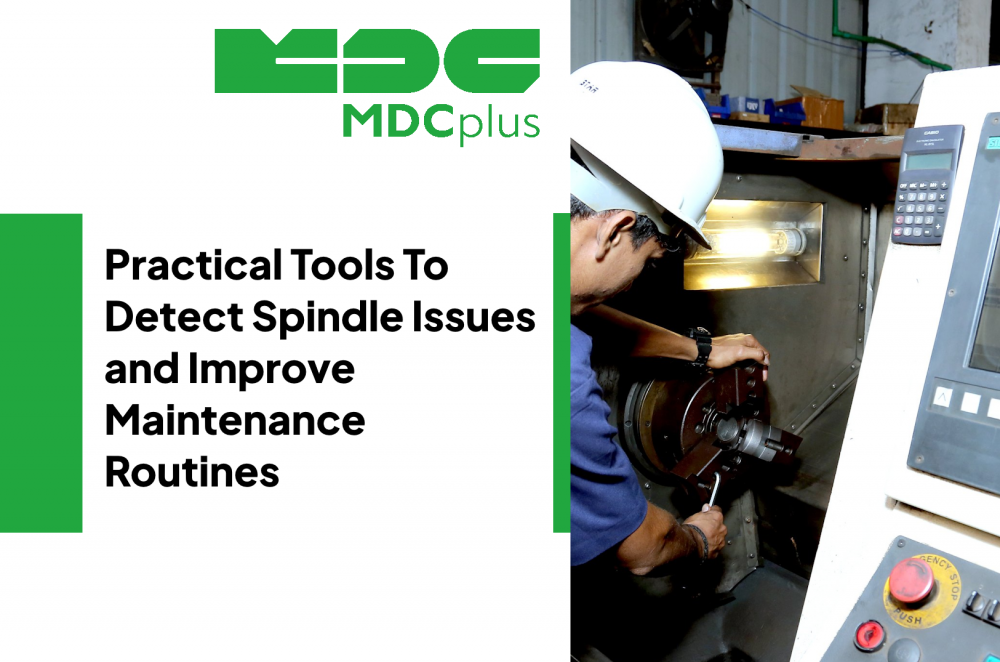Practical Tools to Detect Spindle Issues and Improve Maintenance Routines
This article introduces two practical templates designed to help operators and technicians detect spindle problems early and maintain machine reliability using LEAN principles like SMED, TPM, and 5S.
Why Standardized Spindle Checks Matter
Spindle failures often begin with subtle warnings — unfamiliar noise, vibration, heat, or slight degradation in surface quality. Without early detection, these signs escalate into breakdowns, downtime, and costly repairs. By standardizing checks and recording results, teams can prevent failures, improve efficiency, and build traceable diagnostics into daily routines.
Template 1: Spindle Inspection Checklist
This checklist helps operators complete quick, consistent inspections with simple tools. Ideal for shift-level checks, troubleshooting, or scheduled maintenance.
Spindle Inspection Checklist
| Check | Description | Observation | Action Needed (Y/N) | Notes |
|---|---|---|---|---|
| Noise | Listen for unusual sounds (whistling, grinding, humming) | |||
| Vibration | Check for excessive vibration on spindle housing or workpiece | |||
| Surface Finish | Inspect workpiece for uneven surfaces, waves, scratches | |||
| Temperature | Measure spindle housing temperature (normal: <50°C) | |||
| Lubrication | Check for oil/grease leaks, inspect seals | |||
| Runout | Measure spindle runout (ideal: <0.01 mm) | |||
| Power/Speed | Observe if spindle struggles or loses RPM under load |
Tip: Keep a dial indicator, thermometer, and flashlight near the machine for fast setup. Use this checklist weekly or when abnormal signs appear.
Template 2: Spindle Maintenance Log
This log tracks spindle behavior over time. It supports TPM and helps identify recurring faults or wear trends.
Spindle Maintenance Log
| Date | Operator | Issue Observed | Measurement (Temp, Runout, Vibration) | Maintenance Performed | Outcome | Next Check Date |
|---|---|---|---|---|---|---|
Use case: Fill this log after each inspection or maintenance task. Reviewing it monthly helps catch patterns like repeated overheating or imbalance
Implementation Tips
-
Start with 5S: Clean the spindle zone, organize tools, and mount checklists nearby.
-
Train operators: Ensure staff know how to use basic tools like dial indicators and thermometers.
-
Schedule inspections: Add spindle checks to existing maintenance routines.
-
Pair SMED with TPM: Reduce time spent on diagnostics while increasing frequency and quality.
-
Review in meetings: Use logs in Kaizen discussions to guide improvements.
Summary
These templates bring structure and visibility to spindle maintenance. By embedding simple tools and LEAN habits into daily routines, shops can reduce unplanned downtime, extend spindle life, and empower operators to detect problems early — without relying on expensive monitoring systems.
About MDCplus
Our key features are real-time machine monitoring for swift issue resolution, power consumption tracking to promote sustainability, computerized maintenance management to reduce downtime, and vibration diagnostics for predictive maintenance. MDCplus's solutions are tailored for diverse industries, including aerospace, automotive, precision machining, and heavy industry. By delivering actionable insights and fostering seamless integration, we empower manufacturers to boost Overall Equipment Effectiveness (OEE), reduce operational costs, and achieve sustainable growth along with future planning.
Ready to increase your OEE, get clearer vision of your shop floor, and predict sustainably?
